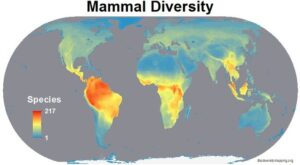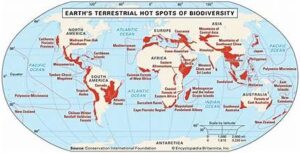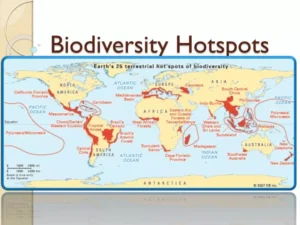
Introduction
Biodiversity hotspots are regions of the world that are both rich in endemic species and have experienced significant habitat loss. These areas are crucial for maintaining the planet’s ecological balance, yet they are among the most threatened ecosystems globally. Understanding these hotspots is vital for conservation efforts aimed at preserving the intricate web of life that sustains our planet. This article explores the world’s most endangered biodiversity hotspots, highlighting their unique characteristics, the threats they face, and the urgent need for conservation.
What Are Biodiversity Hotspots?
Biodiversity hotspots are regions that have a high concentration of endemic species—species found nowhere else on Earth—and have lost at least 70% of their original habitat. The concept was popularized by Norman Myers in the 1980s and later adopted by Conservation International. These areas are critical for global biodiversity due to their unique flora and fauna, which play essential roles in ecosystem functioning.
Key Biodiversity Hotspots Around the World
- The Amazon Rainforest
- Location: South America (Brazil, Peru, Colombia, and other countries)
- Unique Features: The Amazon Rainforest is the largest tropical rainforest in the world, home to approximately 10% of the known species on Earth, including jaguars, sloths, and countless bird species.
- Threats: Deforestation for agriculture, illegal logging, and climate change are major threats. The loss of habitat disrupts the delicate balance of the ecosystem and endangers numerous species.
- The Coral Triangle
- Location: Southeast Asia (Indonesia, Malaysia, the Philippines, Papua New Guinea, Solomon Islands, and Timor-Leste)
- Unique Features: Known as the “Amazon of the Seas,” the Coral Triangle is the epicenter of marine biodiversity, with over 500 species of reef-building corals and 3,000 species of fish.
- Threats: Coral bleaching, overfishing, and pollution are leading to the degradation of coral reefs. Climate change exacerbates these issues by increasing sea temperatures and acidifying ocean waters.
- Madagascar and the Indian Ocean Islands

- Location: Madagascar, the Comoros, the Seychelles, and Mauritius
- Unique Features: Madagascar is home to 5% of the world’s species, including lemurs, chameleons, and unique plant species like the baobab tree.
- Threats: Deforestation for agriculture and logging, habitat destruction, and invasive species threaten the unique flora and fauna of these islands.
- The Himalayas
- Location: The mountain range extends across five countries: Bhutan, China, India, Nepal, and Pakistan
- Unique Features: The Himalayas host a diverse range of ecosystems, from subtropical forests to alpine meadows, and are home to iconic species such as the Bengal tiger, snow leopard, and red panda.
- Threats: Climate change, habitat fragmentation, and human encroachment for development are significant threats. Glacial melting also impacts freshwater availability.
- The Western Ghats
- Location: India and parts of Sri Lanka
- Unique Features: This mountain range is one of the world’s top 10 hotspots, rich in biodiversity, including endemic species such as the Nilgiri tahr and the Malabar giant squirrel.
- Threats: Deforestation for agriculture, infrastructure development, and climate change pose severe threats to this hotspot’s biodiversity.
Conservation Efforts and Challenges
Conservation efforts in these hotspots involve a range of strategies, including the establishment of protected areas, restoration of degraded habitats, and sustainable management practices. International organizations, local communities, and governments are working together to implement these strategies.
However, challenges remain, such as inadequate funding, political instability, and conflicts of interest between conservation goals and economic development. Effective conservation requires a holistic approach that balances ecological needs with socio-economic factors.
The Importance of Preserving Biodiversity Hotspots
Preserving biodiversity hotspots is crucial for several reasons:
- Ecosystem Services: These regions provide essential ecosystem services such as clean air and water, pollination of crops, and climate regulation.
- Scientific Research: Hotspots offer opportunities for scientific discovery and understanding of complex ecological interactions and evolutionary processes.
- Cultural Value: Many indigenous communities depend on these ecosystems for their livelihoods and cultural practices.
Conclusion
Biodiversity hotspots are among the most vital and yet most endangered ecosystems on our planet. Protecting these areas is not only about saving species but also about preserving the health of our planet. As human activities continue to threaten these regions, concerted global efforts are needed to ensure their survival. By understanding the importance of these hotspots and supporting conservation initiatives, we can contribute to the protection of our planet’s rich biological heritage for future generations.


